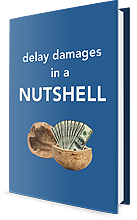The Components of a Good Construction Scheduling Specification
Let’s talk about what goes into a good scheduling specification. Construction scheduling specifications can be fairly long and detailed. They often end up in the general provisions and can be the longest general provision in your specification.
A good scheduling specification will address:
- Definitions
- Administrative Requirements
- Technical Requirements
Definitions of Key Terms
If the scheduling specification uses terms that aren’t defined elsewhere, like critical path, I usually recommend that there be a definition of terms section at the beginning of the scheduling specification.
Here are three key terms that I think are probably the most important related to a critical path method schedule:
- Critical path
- Longest path
- Float
That’s not to say there aren’t lots of other important terms. But, at the very least, these three terms should be defined.
Administrative Requirements
I also recommend that your scheduling specification address what we call administrative requirements:
The Responsibilities of the Parties
Your specification needs to clearly identify the responsibilities of the parties with regard to the preparation, review, and acceptance of the schedule.
The Types of Schedules to be Prepared
It needs to show the types of schedules that are to be prepared: initial schedules, baseline schedules, schedule updates, revised schedules, and recovery schedules.
The Timing of Schedule Submissions
It needs to identify the timing of schedule submissions:
• How long does the contractor have before it must submit the schedule to the owner?
• Does there have to be a schedule available at the preconstruction meeting?
• Does the contractor have 30 days to submit the proposed baseline schedule?
• How long does the owner have to review a schedule that’s been submitted?
The Timing of Reviews and Approvals
The specification needs to indicate the frequency of updates. I want schedule updates every month. That’s really a minimum. For some complex, high-speed projects we might have to update the schedule on a bi-weekly, weekly, or even daily basis.
Changes
And then, of course, the scheduling specification, or some portion of the contract, needs to talk about how the schedule will be used to address revisions to the plan, changes, and other unanticipated impacts.
Technical Requirements
Your scheduling specification needs to address the technical requirements of the schedule:
Software
Your scheduling specifications should identify the software requirements. Some owners might be reluctant to specify software. I can understand that, but it’s also important for owners to be able to read schedule files in their native format.
Ideally, you want your contractors to develop and produce schedules in the software that you use and are familiar with. Most importantly, you should require the contractor to include the relevant native schedule file with every schedule submission.
Modes of Calculation
You need to be specific about how you want the schedule to be calculated: Retained Logic, Actual Dates, or Progress Override.
Specifying the mode of calculation might not seem important at first, but it makes a very big difference in terms of how the software predicts the start and finish dates of uncompleted activities once work begins.
If you want a deeper dive into this topic, check out How Retained Logic, Actual Dates, and Progress Override Deal with Out-Of-Sequence Progress.
Allowable Logic
Do you allow, for example, start-to-finish activities? You probably will allow finish-to-start, start-to-start, and finish-to-finish. But start-to-finish is an unusual way to hook work up, so you should not allow them.
Are Constraints Allowed?
Are you going to allow constraints? Or are you going to limit them to only constraints that are set forth in the contract (i.e. notice to proceed and contract completion)? Or are you going to allow constraints within a project? What kind of constraints are you going to allow? Will you allow zero-float constraints and other kinds of constraints that might be used in just-in-time delivery kinds of projects?
Are You Going to Allow Lags?
If you are going to allow lags, which are time periods that intentionally delay the start or finish of an activity, do you allow negative lags? We won’t talk so much about what these individual things are right now, but these are just some reminders about how you can ensure that you get the schedule that you’re willing to approve.
If a contractor submits a CPM schedule that contains activities with start-to-finish logic relationships, a lot of negative lags, and uses a ton of constraints….all those things might be objectionable to you, and they should be because that’s not good scheduling practice.
It’s a lot easier to deal with those issues, and communicate to the contractor, if you put that in your contract. There are lots of model scheduling specs out there, so it doesn’t require a lot of work to integrate one of them into your project or contract.
Are Coding, Resource Loading, or Cost Loading Required?
Are you going to require coding? In other words, some kind of coding to tell you something about a particular activity? Maybe identify a particular subcontractor’s responsibility? Maybe identify a particular type of work?
Will you require resource loading where you’re asking the contractor to tell you the equipment, the labor, and the materials that might be used for a particular activity? Will you require cost loading where you ask the contractor to identify the dollar value of each and every activity?
There are certainly owners, right now, that pay off of cost-loaded schedules, on an earned-value basis, so that as a contractor finishes activities, the contractor is paid the value of those activities right off the schedule. All these things need to be set forth in the specification to ensure that the schedule the contractor submits is approvable.
Submittal Contents
When the contractor submits the schedule for review and approval by the owner, or the construction manager, or whoever is doing that, what does that submittal have to look like? What has to be contained in the package so that an adequate review can be performed?
These are the basic components of a good scheduling specification.
Scott Lowe is a Principal of TRAUNER and is an expert in the areas of critical path method scheduling, construction claims preparation and evaluation, and specification writing.
He can be reached at scott.lowe@traunerconsulting.com.

